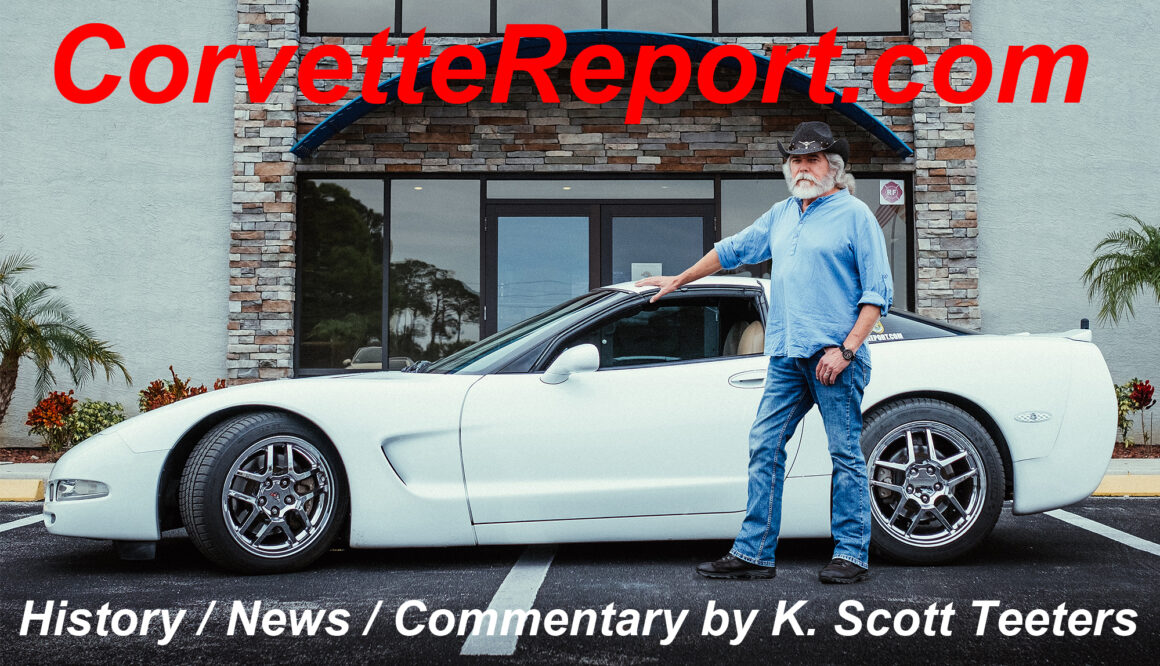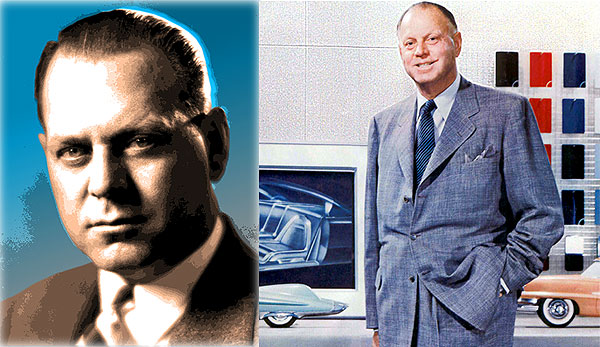The Roman philosopher Seneca is credited for saying, “Luck is what happens when preparation meets opportunity.” When Harley Earl attended his first organized road race at Watkins Glen in September 1951, (the very first Watkins Glen Sports Car Grand Prix was in 1948) two things were glaringly obvious to him; First; “sports cars” were not a fad, there was real passion for the unique European cars he saw racing through the streets of Watkins Glen. And second: General Motors needed to build an American sports car – right away!
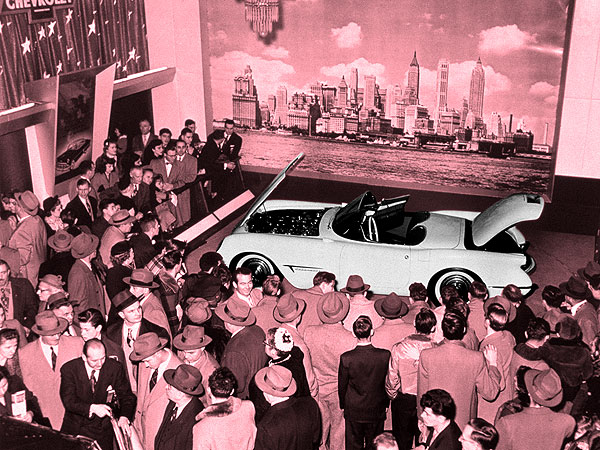
By 1951 Harley Earl was entering the twilight years of his long career in design and innovation. He was a true living legend. Earl knew everyone who was anyone in the automotive world and then some. He wielded so much power inside General Motors that he had a button on his desk to get a direct call to GM’s president Alfred P. Sloan. Earl was a personal friend of United States Air Force General Curtis LeMay and one day in the early 1950s the general said to him, “Why don’t you make an American sports car?”
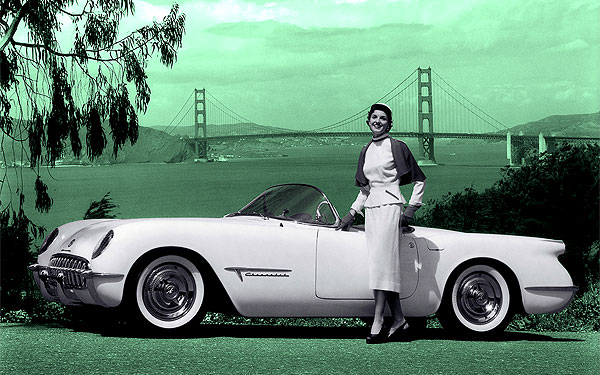
The Strategic Air Command general loved sports cars and owned an Allard J2. GM even built LeMay a special Cadillac-powered Willys Jeep. LeMay was also instrumental in helping start the Sports Car Club of America and in 1954 was the recipient of the Woolf Barnato Award, the SCCA’s highest award for club contributors. Barnato won the 24 Hours of Le Mans in 1928, 1929, and 1930 and he was the only driver to ever win the Le Mans race every time he entered!
Harley Earl was so revered within the automotive industry that a common expression about him back in the day was, “Our Father, who art in Styling, Harley Earl be thy name…” He could be as charming as a prince, but had a forceful, rough personality, and was a perfectionist with a unique sense to know what the public wanted. It is written that Earl had two major influences from the Hollywood world of entertainment. First, from Al Jolson, he learned how to judge an audience. And second, from movie mogul, Cecil B. DeMille, he learned theatrics and showmanship. These two lessons played directly into Earl’s creation of the first ever Concept Car, the 1938 Buick Y Job, and the GM Motorama road show that ran every year across America from 1949 to 1961. This was a modern day, automotive Chautauqua event – educational entertainment, filled with music, dance, lights, cameras, action, beautiful women and beautiful cars!
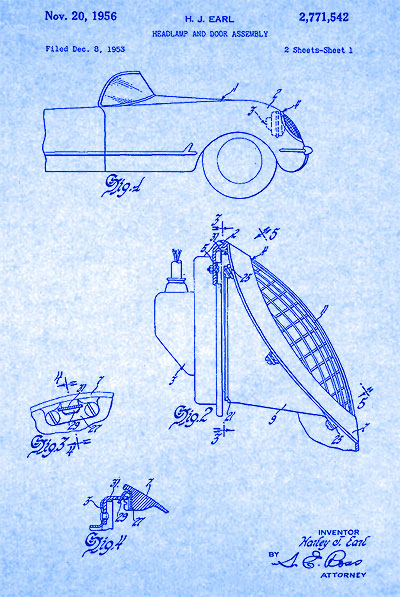
But for a man with such a strong, powerful personality and presence, he was amazingly low-key about how the Corvette came about. In Karl Ludvigsen’s 2014 edition of “CORVETTE: American’s Star Spangled Sports Car,” on page 27 Ludvigsen quoted Earl, “The Corvette was a little thing I started. I went to a sports car race in Watkins Glen. That’s where I got the idea for the Corvette.” How’s that for an understatement? Little did anyone, including Harley Earl, realize that the Corvette would last well over 60-plus years and eventually become a world-class racecar and General Motors flagship “performance and technology” automobile. It is not an overstatement that no one else working inside what was then the largest corporation in America, could have had the power to make such an unproven concept a reality. Harley J. Earl definitely met the criteria of the above Seneca quote; he was uniquely and most definitely prepared.
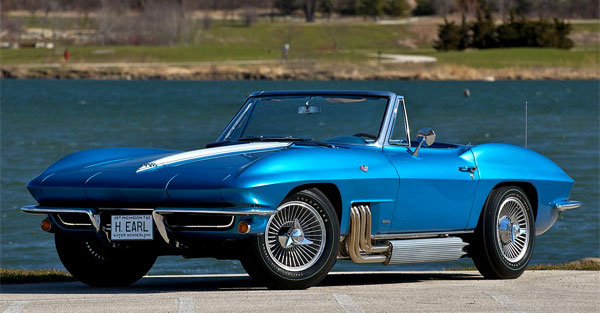
Harley Earl came of age in of all places the sleepy little Los Angeles County town of Hollywood at the beginning of the birth of the automobile age. This was the time before the moviemakers took over the little town. In 1889, four years before Harley was born, his father started a custom coach-building business. The operative word here is “coach” as in “what horses pulled around.” When it was obvious that the horseless carriage wasn’t just a fad, Earl Sr. started “Earl Automotive Works” in 1908 and specialized in building custom, one-of-a-kind bodies (coaches) fitted on to what was then the best chassis made – mostly from Cadillac. The movie business had recently moved from New York to Hollywood and was going through its first wave of film stars experiencing extraordinary fame and fortune. Funnyman Rosco “Fatty” Arbuckel and Hollywood’s first Western superstar, Tom Mix were just two of Earl Motorworks’ high profile customers. Earl did the Mix and Arbuckel cars in 1918 when he was 25 years old.
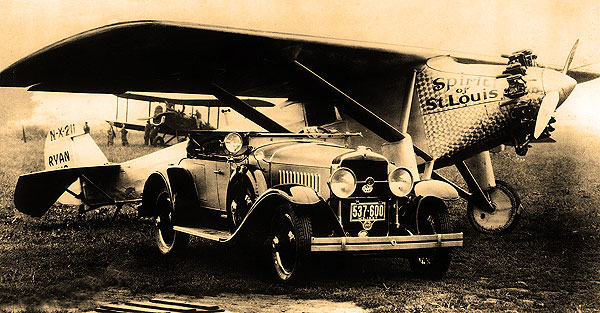
Harley was attending Stanford University, but clearly had “gasoline in his veins.” It didn’t take long for young Harley to drop out of college. Yes, he was a “college dropout” just like Steve Jobs, Bill Gates, Ted Turner, Walk Disney, F. Scott Fitzgerald, and many others that were more interested in preparing for opportunity that would eventually meet up with them, rather than attending college. Harley learned the coach-building business from his father and started using a technique he created as a teenager in 1909 when playing around with clay that he and his brother discovered in large hallow. Using just his hands, Harley shaped futuristic cars with curved surfaces out of the clay he and his brother were playing around with. Fast-forward to the first Corvette, note that except for the lower edge of the rocker and lower door line, there isn’t a straight line on the entire car – it’s all curves and compound curves.
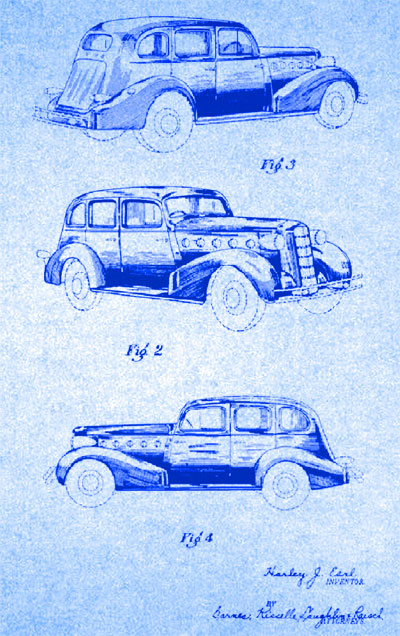
By 1919 Earl Motorworks and young Harley J. Earl had become so hot in Hollywood that Don Lee, the largest Cadillac dealer of the day, bought Earl Motorworks and kept Harley on as his chief designer. Through to 1924 Harley Earl designed and created over 1,000 customer cars! Knowing the “rich and famous”in Hollywood opened many doors for the young man. Alfred and Lawrence Fisher, the Fisher Brothers (as in “Body by Fisher), were two of Harley’s contemporaries and one day while playing golf, Harley outlined his bold plan. “The cars I design for movie stars and millionaires, I can have coming off of GM’s assembly lines in the future.”
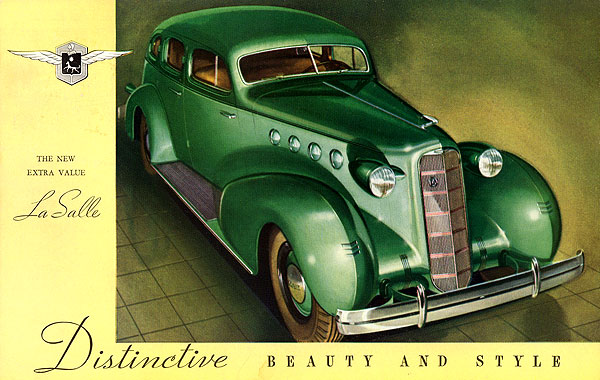
The following year, Earl was offered a consultant job at Cadillac. Earl’s break through year was 1927 when the Fisher Brothers commissioned Earl to design something special for Cadillac’s companion marquee, the LaSalle. Built by Cadillac, the LaSalle was priced under that of the Cadillac, was somewhat smaller, elegant and featured design elements similar to the Spanish/French Hispano-Suiza roadsters. The finished car was so stunning that GM’s president Alfred P. Sloan said to his board of directors, “My god, if a man can do a Cadillac, why doesn’t he do all the General Motors cars?”
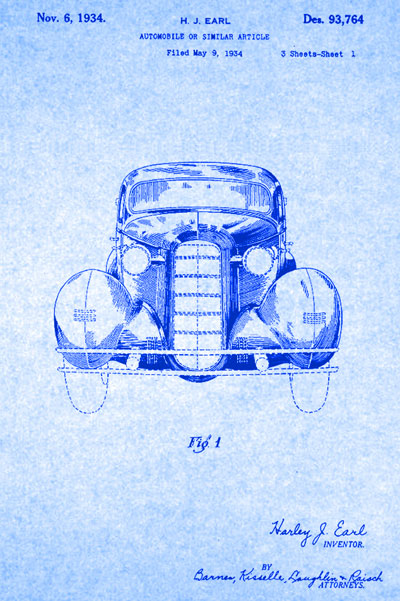
“Style” has been such a large part of modern automobiles for so long, it’s hard to remember the time when a car’s appearance wasn’t the main attraction. Before Harley Earl’s arrival in Detroit, engineering, functionality, and cost were the driving factor behind the way cars looked. Sloan put Earl in charge of a totally new division within GM, the “Art and Color Section.” But all was not smooth sailing for Harley Earl and he struggled for legitimacy within the conservative corporation. When engineers seriously changed his 1929 Buick, and Walter P. Chrysler called the car “pregnant,” sales tanked, and Earl got the heat. Earl’s design was spot on, but the engineers changed the proportions, added height, and made the car look bulgy.
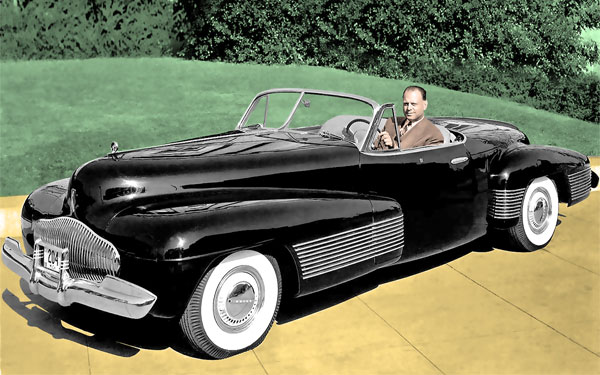
Many inside GM felt that Earl’s designs were too flamboyant and unfounded. His department was snidely referred to as, “the beauty parlor” and his designers were referred to as, “the pretty picture boys.” But remember, Earl had Alfred P. Sloan on his side. By 1937 Earl’s department was renamed, “Styling Section” and Sloan made Earl the first “styling” person to become a VP in a major manufacturing corporation. During Harley Earl’s long 31-year career at GM he was responsible for the finished look of literally thousands of cars. Not that he personally designed all of the cars, but he had the final say when it came to looks and features. Although not formally trained as an engineer, Earl understood engineering and how much he could get into a car at every price point.
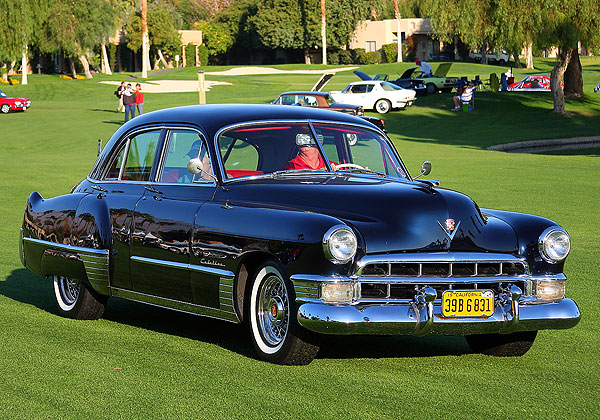
Where Earl really shined was in his personal design lair – his Skunkworks, or Studio X-type design playground. Located on the third floor of the old Fisher Body Plant 8, Earl’s design hatchery was described as, dirty, unassuming, and had a floor that moved when walked upon! Earl deliberately made it look like nothing because he knew the most important thing was to keep new ideas protected, because they are very easily dismissed as “unproven.” Earl was progressive in his thinking – decades ahead of his time actually. He hired Jews, Latinos, openly gay men, and women for designer positions in his studio.
Here are what are considered to be Harley Earl’s Top 12 Designs:
1. The 1938 Buick Y Job.
2. The 1951 LeSabre.
3. 1959 Firebird III (gas turbine-powered).
4. The 1953 Corvette.
5. The 1953 Firebird I (the first gas turbine-powered car tested in the U.S.).
6. 1956 Pontiac Club de Mer.
7. The 1927 Cadillac LaSalle.
8. The 1934 LaSalle.
9. The 1954 Oldsmobile F88 (this was Olds’ “Corvette”).
10. The 1948 Cadillac (the original tailfin car).
11. The 1956 Firebird II (gas turbine-powered).
12. The 1956 Olds Golden Rocket.
You can look up all of the above cars in a Google image search. While the aesthetics are seriously dated, it is important to view these car designs from the perspective of when they were new. The 1938 Buick Y Job was Earl’s personal ride for many years. In 1948 a reporter happened to see Earl driving his Y Job and mistakenly thought he was looking at the new “1949 Buick”! Photos were taken and sent to newspapers all over the nation as “The NEW 1949 Buick!”

Harley Earl was totally in his element, he was a visionary with corporate clout and the resources to get anything done that he could imagine – and he had an amazing imagination! Harley Earl started so much of what we take for granted in a modern automobile. While everyone has their own opinion when it comes to aesthetics, you can’t argue with innovations and firsts. Here is a brief list of some of Harley Earl’s design innovations:
The first use of full-size clay modeling for new body designs. The idea of the annual model change. The elimination of the running board. The first integrated headlights and trunks into the fenders. The introduction of the pillarless top. The first hidden spare tire. The introduction of fins. The first use of curved glass. The creation of the Concept Car, or Dream Car. The hiring of women as car designers and stylists – “Damsels of Design” they were called. The creation of the Auto Design Scholarship Program. Creating the design curriculum for the Art Center College and the Pratt Institute. The creation of the Motorama, today called the “Car Show.” The creation of “Longer, Lower, and Wider” as an automotive design concept. The creation of heated seats and the one-touch convertible top. Lowering chassis and center of gravity. Streamlined coupe body, door handles, and wraparound bumpers. Steering wheel horn. Instruments grouped in front of the driver for better visibility.
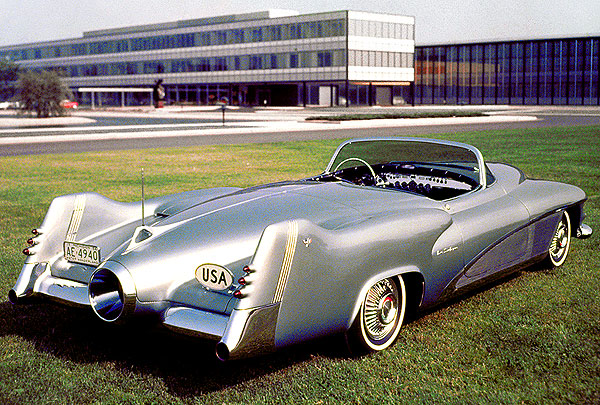
Perhaps the best way to deepen our understanding of Harley Earl is to consider the following quotes from some of the people that knew and worked with the man.
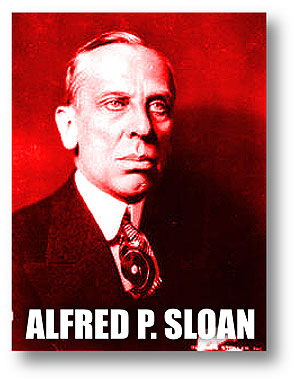
Alfred P. Sloan, General Motors President 1923-1956: “My god, if a man can do a Cadillac, why doesn’t he do all the General Motors cars?”
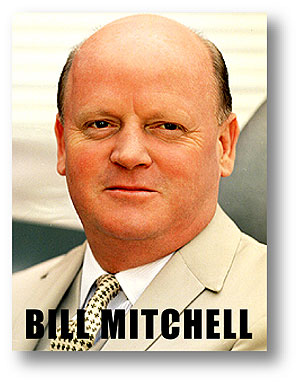
Bill Mitchell, Harley Earl’s successor: “Bronze complexion, wore bronze suits and suede shoes, flamboyant. He’d cuss out the Fisher Brothers and called them, “the Seven Dwarfs.” He was hired by Alfred P. Sloan and didn’t care; he played up to the top men at GM. He even had a button on his desk he’d punch to get Sloan on the line! He was rough-voiced, used malapropisms, and took no prisoners.”

U.S.A.F. General Curtis LeMay: “Why don’t you make an American sports car?”
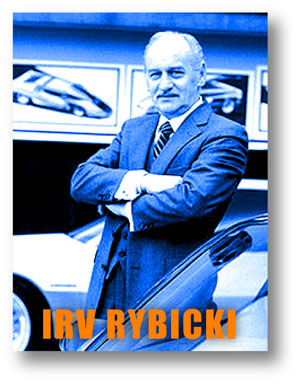
Irv Rybicky, GM VP of Design, 1977-1986: “Harley Earl was responsible for more than half of GM’s greatest 20th century milestones.”
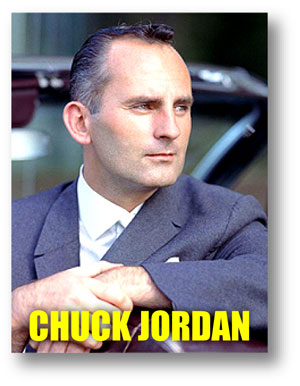
Chuck Jordan, the 4th vice president of design at GM: “Harley Earl was a tough guy. He was a real dictator.”
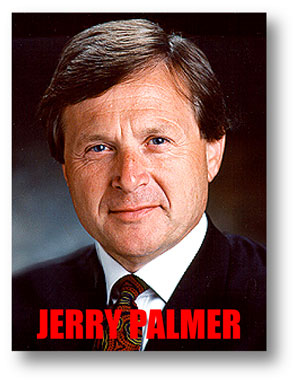
Jerry Palmer, Executive Director of Design for GM North American Operations: “Earl was a fantastic orchestrator – the Maestro!”
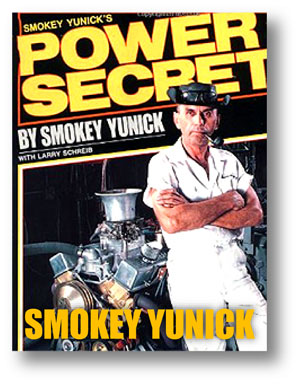
Smokey Yunick, Legendary racecar builder and Chevrolet outside R&D man: “A real war horse! He was big, rough, tough, and talented.”
Connie Earl, daughter-in-law, speaking about Earl’s retirement years: “He liked to take long beach walks and often went fishing for pompano. Most of the time Harley kept to himself. I don’t think anyone knew him well. His number one love in life, even over family, was automobiles.”
The Encyclopedia of Pop Culture: “Nobody else has affected the look of American material culture as much as Harley Earl.”
Modern Magazine: “It is entirely appropriate to speak of automotive design as “B.E.” and “A.E.” (Before and After Earl) If Agustus found Rome made of brick and left it marble, Earl found the American automobile made of wood and lacquer, and left it of brightly painted steel and chrome.”
And here are a few quotes from the man himself:
“The art of automobile design has progressed, until today it is regarded as one of the most important factors in the marketing of the automobile.”
“My primary purpose for twenty-eight years has been to lengthen and lower the American automobile, at times in reality, and always at least in appearance.”
“The trouble with small models is that your eyes don’t shrink with the model.”
“If you drive by a school and the kids don’t whistle, back to the drawing board.”
GM’s “mandatory retirement at the age of 65” policy ejected at least four of the Corvette’s Founding Fathers (Earl, Cole, Duntov, and Mitchell) before their creativity expired. But Harley Earl’s power continued on even after he retired from GM. In hindsight, it is astonishing that after over four decades in the automotive business, Earl would only enjoy his retirement lifestyle for the last ten years of his life. Harley and his wife Sue retired to what it described as a modest oceanfront home in Palm Beach, Florida. Today, these are multi-million dollar homes!
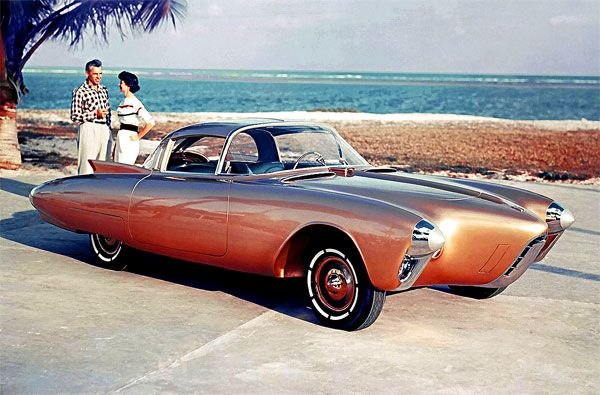
During his retirement years, if Earl got an idea for a customized Corvette, he would create a rendering at his drawing board in his home office, then send his art to his pal, Semon “Bunkie” Knudsen (Chevrolet General Manager from 1961 to 1965) to have it built according to his instructions! Since he knew what was in the works for the Corvette, his custom cars often had features and details not yet available.
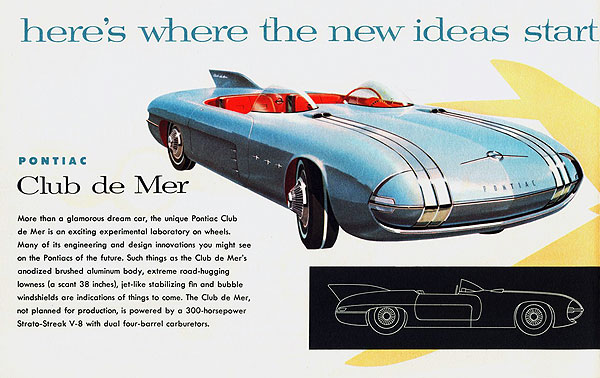
Earl’s 1938 Buick Y Job and the 1951 LeSabre are his most famous concept dream cars. But in the Corvette world, Harley’s personal retirement ride, 1963 Sting Ray Roadster holds a special place. Although not Earl’s “design” (that honor goes to Bill Mitchell, Larry Shinoda, and Pete Brock) the stunningly beautiful metallic blue Roadster was dripping with special features, as per Earl’s design. In October 2013 at the Mecum Schaumberg, Illinois auction, the car sold for a whopping $1,500,000! Harley’s wife, Sue also had a “customized by Chevrolet” 1963 Sting Ray Coupe with Pearl Pink paint, preproduction 1965 four-wheel disc brakes, and interior trim. Mrs. Earl’s Corvette sold for $340,000 at the 2014 Mecum Kissimmee Auction.
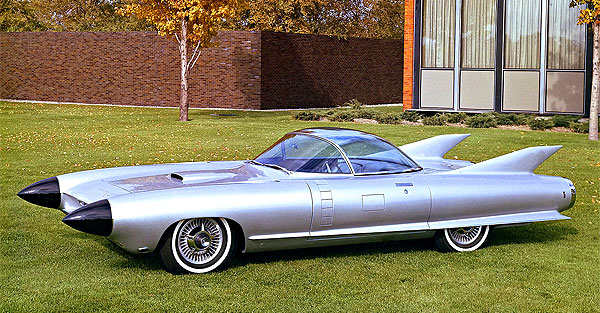
Corvettes at Harley’s beachfront house did not go unnoticed. The Palm Beach locals regularly cruised by his house for a look-see. Whenever Earl was out and about, the big man with the aviator sunglasses (Earl was at least 6’-4” tall) and his hot cars were always noticed. One of Earl’s other passions was NASCAR. He was good friends with NASCAR founder, Bill France, Sr and was the second NASCAR National Commissioner. The honorary title was Bill France, Sr’s personal reward to individuals that have made significant contributions to auto racing.
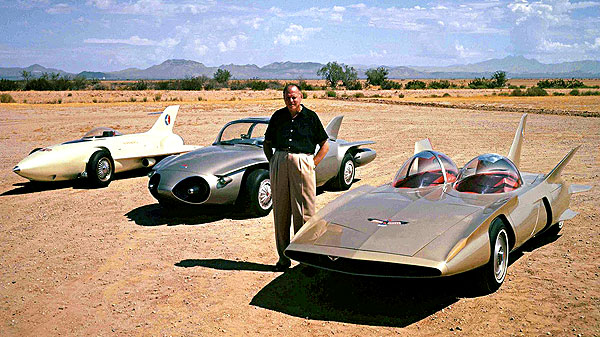
Harley J. Earl’s accomplishments were staggering. His beautiful concept cars and subtle innovations (such as turn signals and wrap-around glass) that live on today, unnoticed, aren’t nearly as impactful as his greatest legacy, the Corvette. His quote, “The Corvette was a little thing I started.” is one of the all-time great, automotive understatements. Sixty-five years after Earl took his LeSabre concept car to the 1951 Watkins Glen sports car race and was inspired, we are still captivated by Corvettes. That’s one heck-of-a legacy! – Scott

